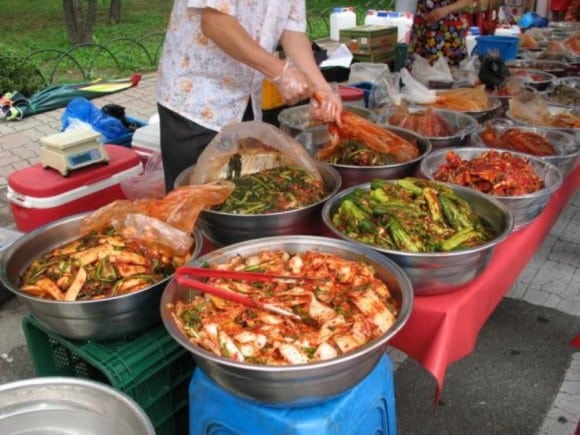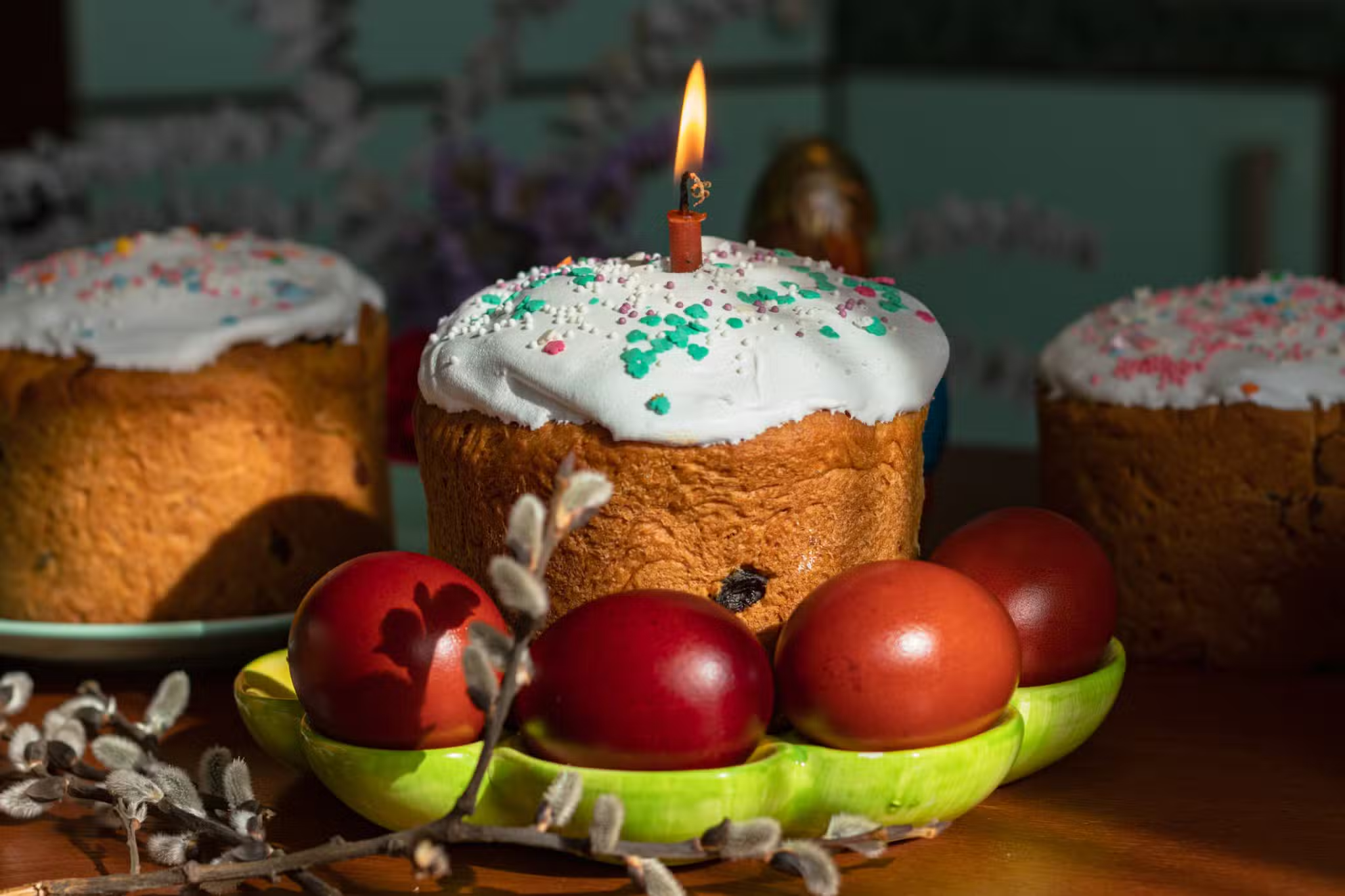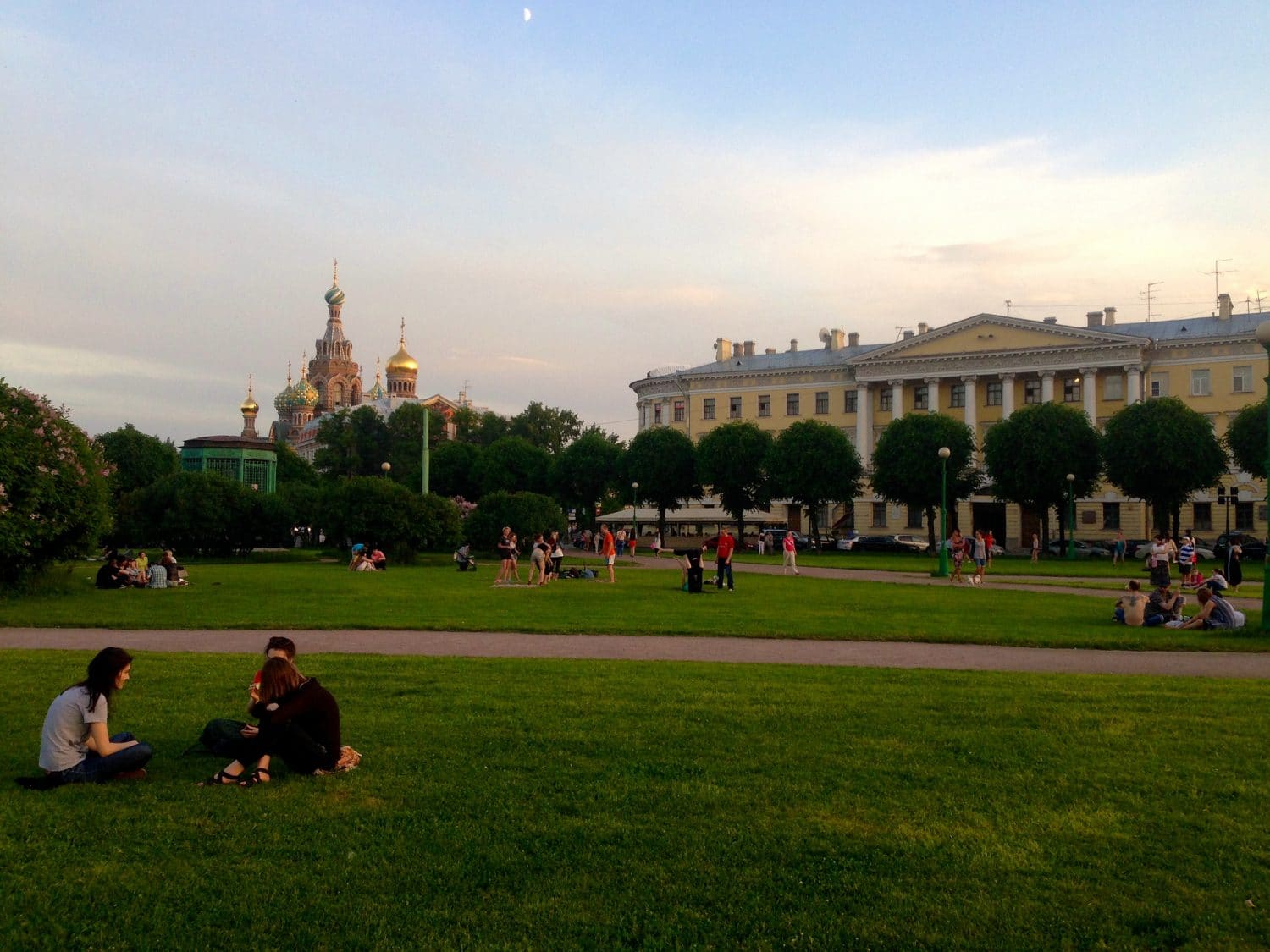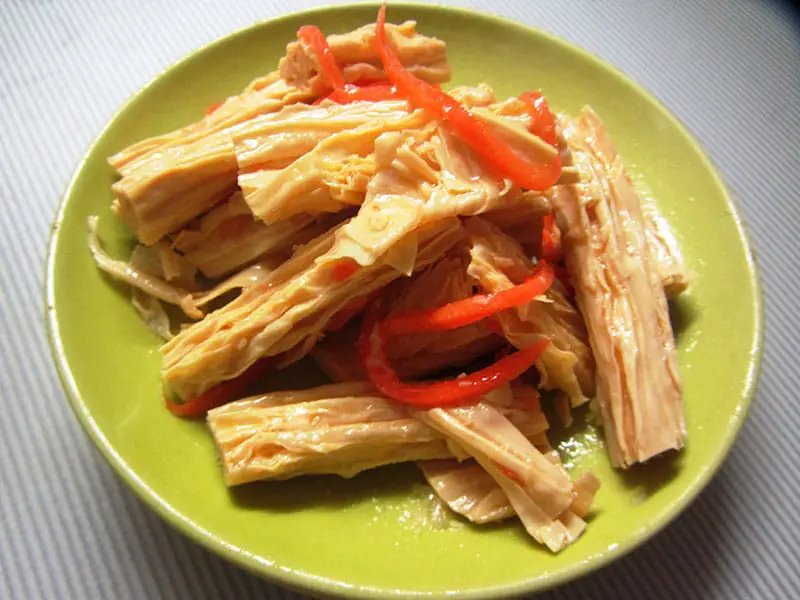Korean Sparzha (спаржа по-корейски; also called соевая спаржа; Soy Sparzha) has a misleading name. First, this unusual and beloved salad has nothing to do with “спаржа,” which means “asparagus” in Russian. Also perhaps misleading is the fact that, while invented by Koreans, it was not invented in Korea. Like “морковь по-корейски” (Korean carrot salad), Korean sparzha was born in the Soviet Union, in the “Корё-сарам” (Koryo-Saram) community of ethnic Koreans displaced to Central Asia by the large-scale deportation ordered by Stalin in 1937.
Today, it is popular enough and common enough throughout Russia, Ukraine, and Central Asia to be often referred as simply “спаржа” in Russian. It is a salad made by skimming the foam from boiling soy milk (often referred to as “skin” or “beancurd”) and drying it into rod shapes. Those rods can then be stored, boiled like pasta, and served with oil and spices.
While popular, Korean sparzha is an anomaly in Russia and post-Soviet states, where soy products are rare. You would most likely be hard-pressed to find someone in Russia who calls tofu a part of their diet.
How It Got Its Name
(Почему она носит такое название?)
The chief ingredient in Korean sparzha is usually called “dried tofu skin” or “dried beancurd” in English. It goes by many names in Russian. There is no consensus on why the dried rods of tofu skin are most often called “спаржа” (asparagus), but it is likely because they bear little resemblance to any other food most people are familiar with and perhaps bear some passing resemblance to the stalky vegetable, particularly the large, white variety of asparagus. It perhaps helps that asparagus in any form is actually another dish with which most Russians have little experience.
Regardless of the reason, the name confuses many fans of the dish, who believe that they are, in fact, eating asparagus in some form. The soy product is also sometimes referred to as “юба” (yuba), the Japanese word for the film on the surface of soymilk from which the product is made, or as “фучжу” (fuzhu), a Chinese name meaning “tofu bamboo,” for the rods it is sold in.
Beancurd is Chinese in origin, and has been used in both China and Japan for centuries. According to legend, it became popular thanks to Chinese Emperor Qin Shi Huang, who ruled from 246-210 BC and founded the Qin Dynasty. The legend has it that the Emperor requested an elixir of youth in his old age, and finally settled on beancurd out of the many concoctions brought to him.

The “Корё-сарам” Koreans likely adopted the dish out of necessity. Displaced to Central Asia, they had to turn to farming to feed themselves. As soy was common in their diet, many planted that crop. However, food was scarce, especially in the early years. Thus, preserving the nutritional value of the beancurd, which, like the soybeans that create it, is high in protein, made sense and was one way to preserve foods for the winter as well.
How and When to Eat Korean Sparzha
(Как правильно есть спаржу по-корейски?)
Korean sparzha can be found in Russia and Central Asia in supermarkets and bazaars alongside other “корейские салаты” (Korean salads), among which it is considered a particular delicacy.
The popularity of Korean sparzha has grown in Russia in recent years due to touted health benefits. It is high in protein, and thought to positively affect blood pressure and cardiac health. Folk medicine promotes the dried soy product’s anti-inflammatory and diuretic properties.
Korean sparzha is frequently bought as a prepared salad, and served as a side dish, often for guests since its unusual, savory taste is so widely appreciated. Dried sparzha can also be purchased in prepackaged dried form, or produced at home from soybeans. The salad can then be prepared at home fairly simply and quickly, though some recipes insist that for best results, the sparzha must be soaked for many hours before use.

How to Prepare Korean Sparzha
(Как правильно готовить спаржу по-корейски?)
The tofu skin in Korean sparzha is a by-product of boiled soymilk. It is also sometimes called “соевая пенка” (soy foam), because it is made by skimming off the layer of film that forms on soymilk when it boils. The film is suspended to dry, and sold in pale, wrinkled stalks known as soy foam in Russia. In America, they can be found in Asian food stores or in the ethnic section of some supermarkets as “dried beancurd sticks.”
If store bought, be sure to check the expiration date before purchasing. While they will keep for a considerable time, spoiled beancurd will definitely spoil your salad. Also, check the back for sodium content. Many brands add considerable salt to the product to boost shelf life – but the heavy salt will also affect the flavor of your salad.
To prepare store-bought sparzha at home, it first needs to be softened. This can be accomplished by soaking it in cold water overnight (or for up to 24 hours), or by pouring boiling water over it and letting soak for 30-40 minutes, or by boiling it on the stove for 10-15 minutes. Many recipes insist the slower the soaking, the better, as it will more evenly and gently soften the stick and preserve its texture.
The softened, swelled soy is then usually chopped into small sticks about 1-inch long and prepared as a salad that closely resembles “морковь по-корейски“, with spices cooked in oil and poured over it. In fact, the carrot salad is sometimes added directly to Korean sparzha. The mix is often available along with the two salads in markets and supermarkets. Sometimes grated cucumbers or other fresh vegetables are added as well, although this is not as common in Russia.
The salad’s dressing usually includes soy sauce, garlic, vinegar, and oil that has been heated on the stove with chopped onion. The onion is often removed before the oil is poured over the salad. Red pepper and coriander are often added for spiciness. Once prepared, the salad marinates in the refrigerator for a few hours, and is then served as a side dish, or even as a main course over rice. The finished product is succulent, chewy, and distinctively flavorful.
Korean Sparzha Recipe
(Давай приготовим!)
| Спаржа по-корейски | Korean Sparzha |
Ингредиенты
Приготовление
|
Ingredients
Preparation
|
| Соевая спаржа по-корейски | Korean Soy Sparzha (Spicy) |
Ингредиенты
Приготовление
|
Ingredients
Preparation
|
Our Favorite Korean Sparzha Videos
This clear video follows the first recipe above.
This segment by “Жить здорово!” (Healthy Living!, a program on Russia’s Pervy Kanal) on Korean sparzha playfully covers the topic of соевая спаржа from every angle, including its name, how to choose a high-quality product, and how to prepare it.
You Might Also Like
Kupala is an ancient Slavic holiday celebrating the summer solstice, or midsummer. Once part of a series of annual rituals, it marked and was believed to sustain agricultural cycles—essential to early human survival. Held as vitally important, these pagan traditions remained deeply rooted even after Christianization, technological change, and centuries of oppression tried to dislodge […] Easter breads such as kulich, paska, choreg, and nazuki are delicious Easter traditions. Easter is by far the most important religious holiday for those practicing Eastern Christianity. In addition to church services and egg dying, the holiday is also marked across the cultures by ritual bread baking. Despite the wide geographic area covered by Eastern […] Below, Tajik blogger Roxana Burkhanova describes, in Russian, the place of St. Petersburg in Russian culture. She discusses the city’s history as well as its literary heritage, its nightlife, and even how people from Petersburg speak their own, slightly different dialect of Russian. The text was originally written in 2015 and thus references times before […] Rites of welcoming spring and saying goodbye to winter are some of the oldest holidays preserved across Slavic cultures. In the Baltics, the celebrations were nearly lost after being suppressed by Catholic and imperial dominance. Today, Russia’s Maslenitsa is by the far the best-known, but multiple versions exist across the diverse Slavic landscape. In the […] This extensive list of web resources to assist students learning the Russian language was developed by SRAS and is now hosted on Folkways, part of the SRAS Family of Sites! Disclosure: Some of the links below are affiliate links. This means that, at zero cost to you, we will earn an affiliate commission if you […]
Kupala: Ancient Slavic Midsummer Mythology and its Modern Celebration

Kulich, Paska, Nazuki: The Easter Breads of Eastern Christianity

Off to Petersburg, Russia’s Cultural Capital: Моя Россия Blog

Maslenitsa, Masliana, Meteņi: Spring Holidays of the Slavs and Balts

Resources for Students of Russian





